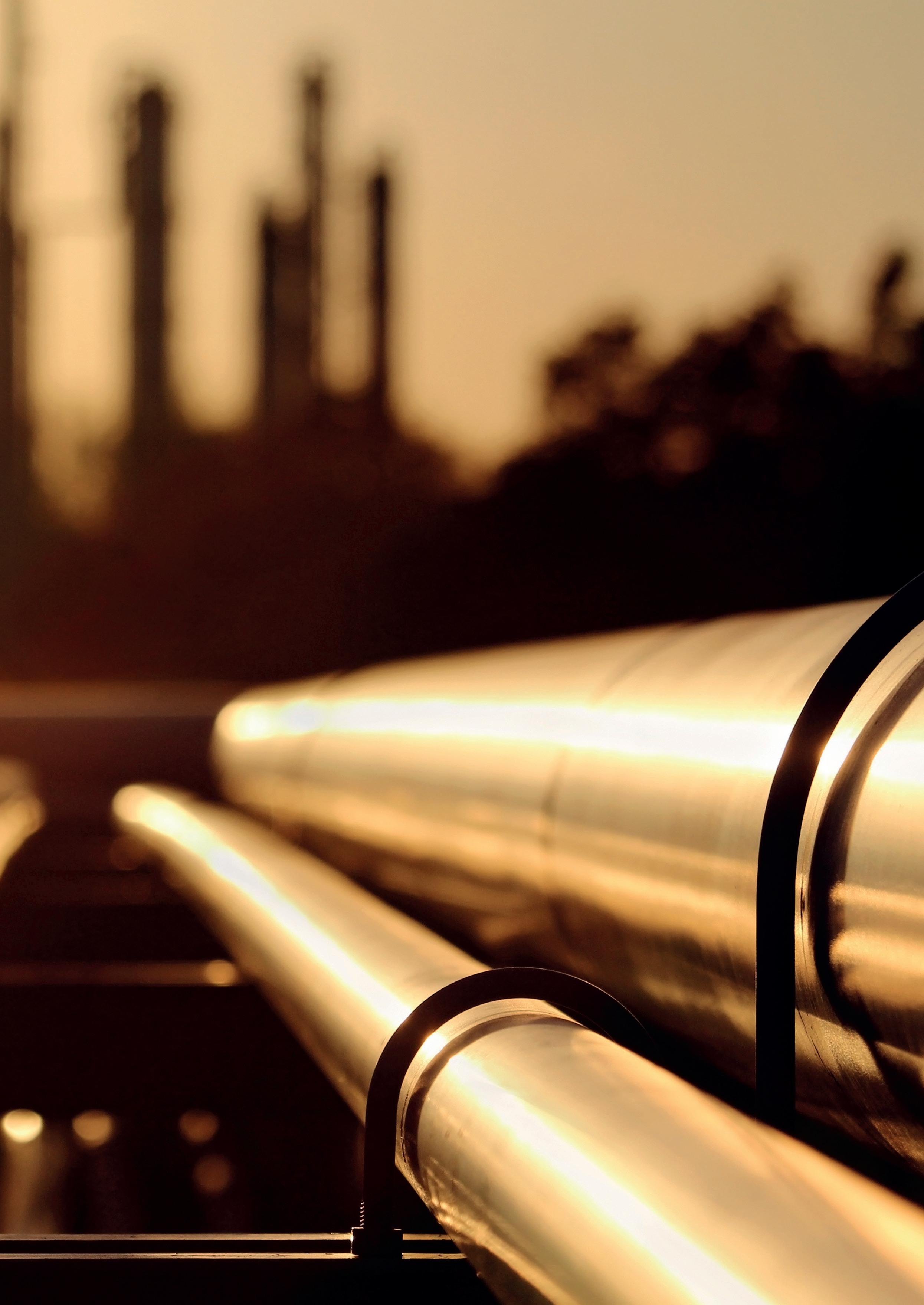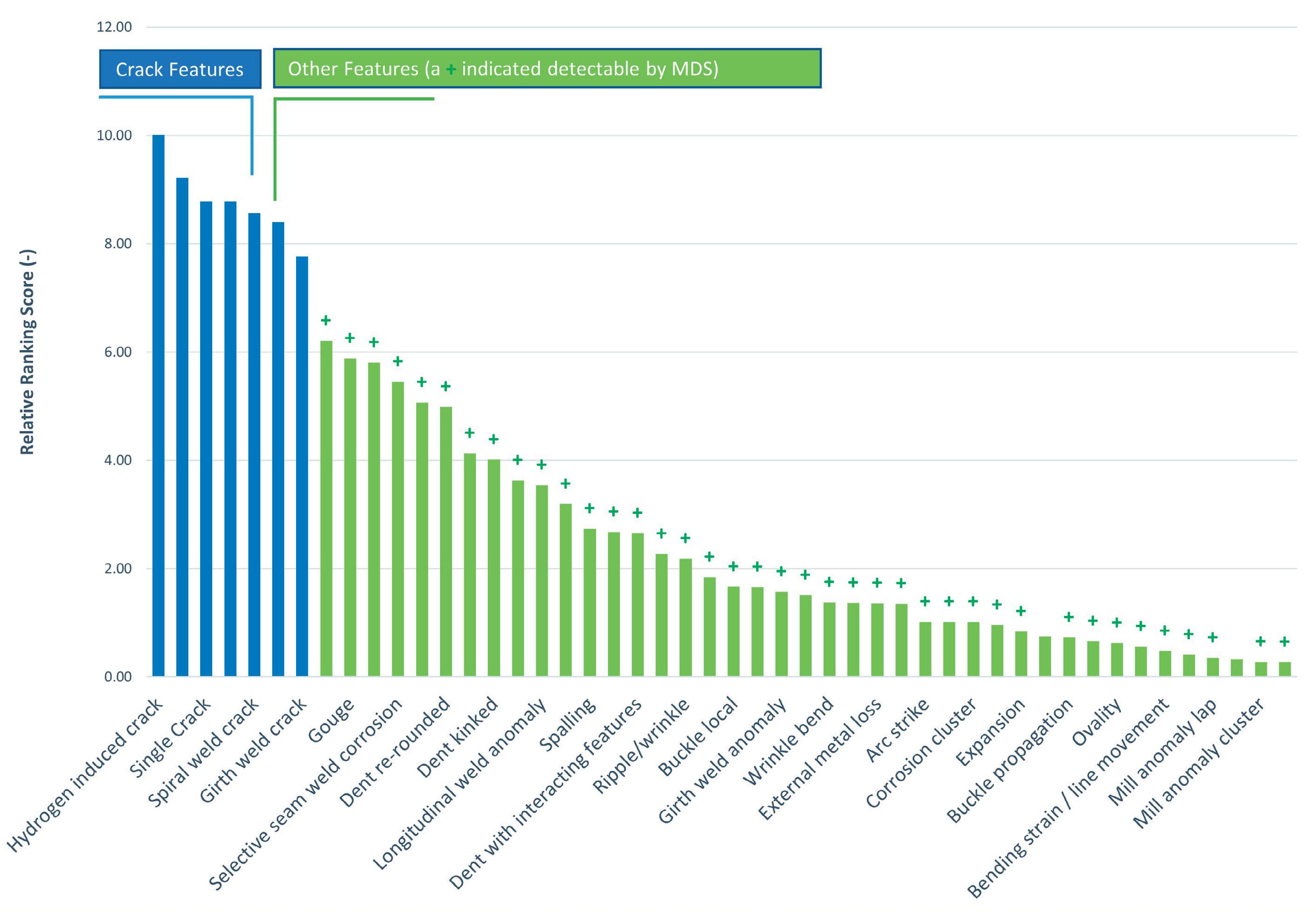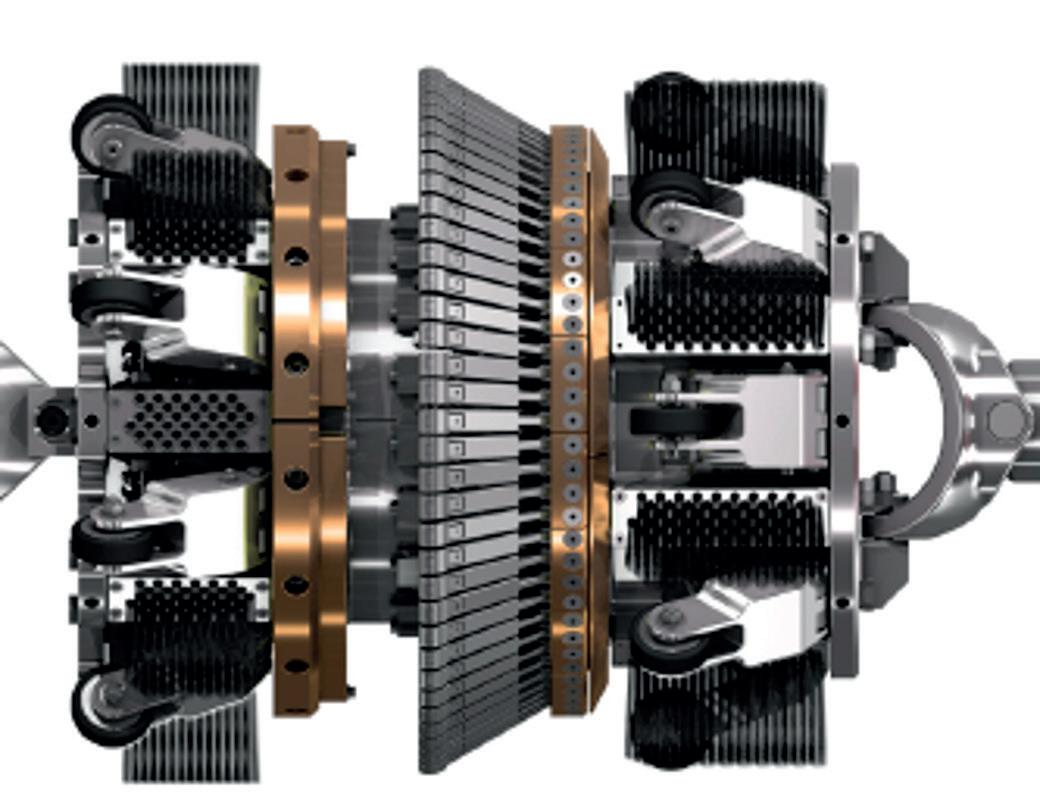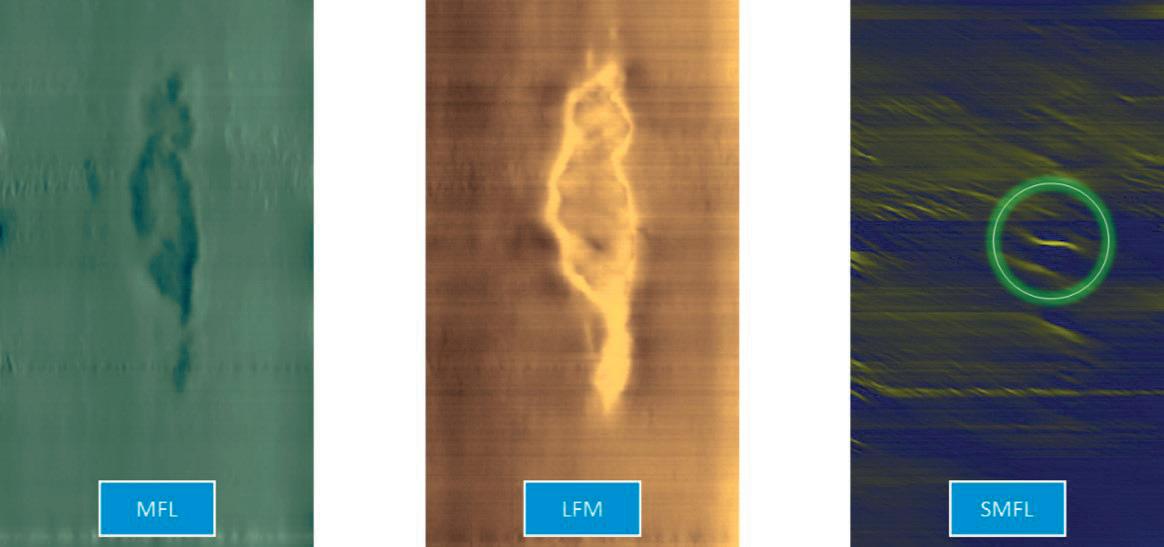
10 minute read
Maintaining the pipelines of the future
Decarbonisation and net zero are buzz words that are being used in the energy arena, but what do they mean for pipelines? Dr Mike Kirkwood, T.D. Williamson, UK, explains.
Every future projection for energy includes fossil fuels. For example, the US Energy Information Administration (EIA) projects that in 2050, natural gas and oil will supply nearly 50% of the world’s energy, compared to 54% in 2020.1 So, fossil fuels will be key to energy needs well into the future. However, with the drive for cleaner energy as well as the added imperative of security of supply, one key fuel that will likely move us closer to this goal is hydrogen and the use of pipelines as a cost-effective means of transportation.2 This article will look at some of the issues related to the conversion, construction and operation of these new breeds of pipelines.

Transmission pipelines: new challenges
There are over 4500 km (2800 miles) of hydrogen pipelines in operation worldwide. One of the first hydrogen systems was built in 1938 and now runs 875 km of pipeline between 25 chemical and petrochemical plants in the Rhine-Ruhr area, Germany. Using hydrogen in pipelines is not new, but current systems mainly operate in industrial areas, are relatively short in distance, and run at low pressures equivalent to a stress level of ≤ 0.5 x the specified yield strength (SMYS) of the pipe material.
The next phase of development will have major implications for new and existing infrastructure, including designing new pipelines and converting existing ones to receive gases in different volumes, pressures, cycles and constituents. To prepare for this, the industry needs to look now at pigging, in-line inspection (ILI), and intervention.
Pipeline pigging
follow, standard procedures using water, air or nitrogen could be maintained, and no special consideration would be required.
When in hydrogen service, it will be necessary to select the right components to endure the aggressive environment: y Bolts and fasteners need to be low strength to prevent failure, and need to be sized correctly for the same stress. y Brush material should be austenitic steels, aluminium or plastic based, which are less susceptible to embrittlement and sparking. y If there are canisters (e.g. data logger, transmitter, etc), elastomers that are resistant to explosive decompression will be required. y Careful selection of urethane hardness, flexibility and wear resistance for cups is needed. y Cleaning in a dry atmosphere may create static electricity, hence the requirement to have non-sparking components or including some form of earthing.
Before operation/conversion, cleaning of pipeline systems is normally accomplished by running conventional cleaning pigs, and this will be no different for hydrogen. As normal post-construction/post-decommissioning cleaning would

Figure 1. Critical anomalies for hydrogen – SME pairwise ranking.3
Figure 2. Multiple dataset (MDS) combination tool.
Although 100% hydrogen pipelines will be relatively free of impurities, blended hydrogen and natural gas will still contain corrosive products that call for careful management by way of utilising pigging processes. The transition to hydrogen will require a deep review of current field working practices and the roll out of enhanced procedures to protect employees, the public and infrastructure. The most critical areas requiring focus are launching, receiving and retrieving in-line tools and pigs. These impacts include: � The elimination or mitigation of worksite sources of ignition, and appropriate zoning. � Awareness of potential operational sources of ignition such as pyrophoric black powder from cleaning legacy methane pipelines. � Assessment of the surrounding facilities to identify potential ingress routes, equipment that may create sparking, and inert objects that may also be ignition sources e.g. loose, hard surfaces such as flint stone, dropped objects, and even large compost or manure heaps with elevated temperatures. � Availability of inerting mediums such as nitrogen with venting procedures in place. � Planning appropriate venting pathways to safely remove the hydrogen or hydrogen mix, preferably to flare.

� Active monitoring of the effectiveness of the inerting process prior to breaking containment by actuating the closure door. y Rehearsed contingency plans with resources onsite to respond to any incident.
Pigging solutions including closures, pigs and pig signallers can all be made hydrogen-ready. Soon, the focus will need to turn towards procedure development and the associated management of change.
Pipeline ILI
The current European Hydrogen Backbone report predicts that 53 000 km (33 000 miles) of pipeline infrastructure will be developed in 28 European countries by 2040.3 The backbone is expected to be made up of 60% repurposed natural gas pipelines in 2040. This requirement for conversion will demand an assessment of all defects that are susceptible to hydrogen attack or degradation.
As part of the investigation into the tool technology that is required by an operator to detect high-threat defects for hydrogen service, a pairwise assessment was conducted utilising internal subject matter experts (SMEs) to rank the importance of each anomaly against its pair. This meant asking each SME to score 1128 individual entries to allow a pairwise matrix of importance to be developed.4 The resulting ranking is shown in Figure 1. This highlighted that crack features ranked as extremely important to find, but there are still a significant group of non-crack defects that will be susceptible to hydrogen attack.
There are many technologies that can be used to measure these defects, as listed below: y Geometric features such as ovalities, dents, etc. y Metal loss features such as corrosion, gouges, etc. y Crack features such as weld cracks, fatigue cracks, environmental-induced cracking, etc. y Pipeline movement such as strain from geohazards, wash out, storm damage, etc.


Multiple dataset (MDS) tools combine these technologies to detect complex interacting defects such as dents with gouges, which represent significant defects for any pipeline. One such platform for pre-hydrogen service is the MDS tool in Figure 2. This uses five sensing technologies that can find most defect types that are not cracks, as identified in Figure 1. For crack detection in a gas environment, the Electromagnetic Acoustic Transducer (EMAT) tool can be utilised (see Figure 3). To highlight the benefits of running the MDS tool, a green ‘+’ has been used in Figure 1 to highlight those defects that can be detected. The defects highlighted in the blue bars would be detected by the EMAT tool. In combination, a two-tool run pre-assessment would capture all those defects that are susceptible to hydrogen. One dataset that is unique to the MDS tool is low field magnetic flux leakage (LFM). LFM identifies magnetic permeability changes in the steel microstructure due to mechanical working and/or heating/cooling. In normal magnetic ILI tools, strong permanent magnets impart a magnetic circuit into the steel, saturating the pipe wall with magnetic flux shown in the far right of the B-H curve in Figure 4. At the location of a volumetric change, the flux leaks from the pipe and is detected by sensors placed in the field. LFM is good at finding areas where the material has been strained, such as where dents have re-rounded. Additionally, LFM can be used to determine differences in the pipeline material, such as identifying changes in the steel Figure 4. LFM dataset. LFM sensor array (left); B-H curve for steel (right). from pipe joint to joint and hard spots. As an example, Figure 5 shows how the MDS detects hard spots. The MFL dataset indicates that metal loss exists, though this is not always the case. LFM sees material change and then another dataset, spiral MFL (SMFL), pinpoints an axial-planar defect within the hard spot. This example highlights the need to use multiple technologies to identify this threat, especially as the hardened material may be susceptible to hydrogen induced Figure 5. Hard spot as seen by the MDS tool. cracking (HIC). Hard spots are a good example of what, in natural


gas systems, are seen as relatively benign, but become an anomaly of concern in the move to hydrogen.
Once hydrogen pipelines are operational, they will still need to be inspected. While internal corrosion is less of a concern, external corrosion and mechanical damage remain threats. It is well known that metal components can be susceptible to hydrogen. T.D. Williamson (TDW) found that some components on ILI tools would be impacted when exposed to very small amounts of hydrogen, even as low as 50 ppm (0.005%), which is well below some early adoption percentages for blended hydrogen and natural gas. TDW has been working with hydrogen operators using hydrogen, and has developed a tool that is capable of running in 100% hydrogen.5
The hydrogen tool required has the following specifications: y Encapsulation of magnets. y New sealing approach to protect the sensitive electronics and batteries within the pressure vessels. y New brushes to support the magnetiser and couple the magnetic flux to the pipe wall. y Re-engineering of all high-strength steel components, including the tool’s body-to-body coupling system. y New wiring harness materials. y New composition of the urethane cups and discs.
The development of inspection tools that are capable of operating with pure hydrogen is possible, and the industry knows what is needed from tool design and operation conditions to acquire high-quality inspection data. The next-generation fleet of ILI tools will be built to include 100% hydrogen compatibility as a standard requirement.
Isolation and connection
A common way to gain access to the pipeline is to make a hot tap and connection, or to stop flow to isolate the live pipeline. For decades, intervention and isolation operations have been performed successfully on all types of pipelines. However, the characteristics of hydrogen may increase some of the associated risks. For example, hydrogen molecules are smaller than those of natural gas, meaning that they can escape more easily where there is a connection or potential leak path, which can occur when using a hot tap and plugging (HT&P) approach.
Additionally, hot welding and the permanent connections, e.g. split tee fittings, which are left on the pipeline, all become a consideration. In fact, there is such concern that the recent supplement to IGEM/TD/1, which is specific to high-pressure hydrogen pipelines, states: “Under-pressure (i.e. ‘hot tap’) operations shall not be carried out on pipelines operating in hydrogen service unless proven to be suitable.”6 This highlights the need to work together, as TDW has proven technology and has experience of hydrogen pipelines, and the company
Figure 6. The new design of HT&P completion plugs. New completion plug set in place with extended leaves that fit in the flange groove; no leak paths (left). The old design of plug is held in place with segments that are extended with a screw mechanism drilled through the flange (right). has developed processes and procedures to ensure that hot tapping can be carried out confidently. TDW leads the development of HT&P technology to meet the future demand for hydrogen. For example, to satisfy the pipeline industry’s need, it has created a new completion plug that locks into place rather than screwing into the flange, as in the previous design. The design eliminates penetrations in the flange that would allow gas to seep through Figure 6. The company is also using extensive knowledge in other applications, including sour services hydrogen sulfide (H2S), carbon dioxide (CO2) and ammonia (NH3), to manufacture fittings for hydrogen pipelines and revise processes and procedures so that existing technology can continue to be used.
Conclusion
Fossil fuels will remain with us for some time, but as the hydrogen market is developed, the energy map will change – especially for transmission pipelines. A lot of people are asking: are we going to be ready? The simple answer is: we must be ready. The impetus is on the industry to solve some of the major obstacles, and many projects are already underway. Collaboration is the way forward, and TDW is one company preparing a full range of products and services to be ready for this shift.
References
1. ‘International Energy Outlook 2021’, U.S. Energy Information Administration, https://www.eia.gov/outlooks/ieo/consumption/subtopic-01.php 2. DESANTIS, D., JAMES, B., HOUCHINS, C., SAUR, G., and LYUBOVSKY, M., ‘Cost of Long-distance Energy Transmission by Different Carriers,’ iScience 24, (2021). 3. ‘European Hydrogen Backbone’, Guidehouse, (April 2022), https:// ehb.eu/files/downloads/ehb-report-220428-17h00-interactive-1.pdf. 4. KIRKWOOD, M., MCKNIGHT, N., and POE, R., ‘Pigging in the new Hydrogen Era’, Technology for Ageing Pipelines (TFAP), (2022). 5. BARKER, T., and WILLS, R., ‘In-line Inspection of Hydrogen Carrying Pipelines’, Pigging Products and Services Association, (17 – 18 November 2020). 6. ‘IGEM/TD/1 Edition 6 Supplement 2 - High Pressure Hydrogen Pipelines’, Institution of Gas Engineers and Manages (IGEM), (2021).











